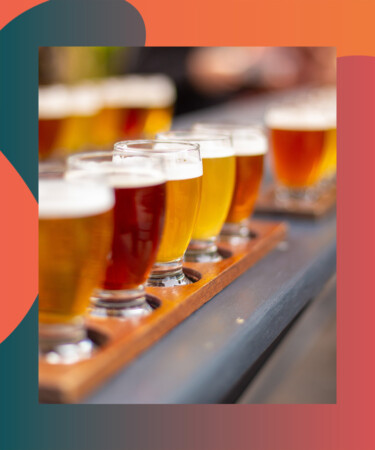For brewers, the past year was filled with slowing brewery expansion and a consistent theme of economic uncertainty, according to a Brewers Association report and presentation shared this week.
The Brewers Association (BA) is a not-for-profit organization composed of nearly 6,000 brewery members as well as numerous other trade professionals. The annual “Year in Beer” package explored numerous difficulties in the craft beer industry, including rising prices, climate change issues, and more.
The recovery period from Covid disruptions appears to be taking longer than expected, per the report, as breweries face increased competition and supply frustrations.
The report includes several data points on the state of the on-premise sector. Over 550 new breweries opened in 2022, the BA estimates, while more than 200 locations closed. While draught beer has been slow to return to pre-pandemic levels, total on-premise visits bounced back strong with in-person events.
“Riding through a challenging and competitive year, taprooms and brewpubs found ways to innovate and keep customers coming through the door, while brands with a retail presence continued to compete with other beverage alcohol choices for shelf space,” the report states.
Supply chain disruptions rocked production on a national scale. Small brewpubs and taprooms fared better, as these establishments seemed to suffer fewer sourcing difficulties compared to larger operations. Some supply chain pressure on ingredients has seemed to cool down, with a few key exceptions. Climate change and low agricultural output contributed to a tight supply of barley and hops. Following on from recent years, difficulty remained in sourcing aluminum cans and carbon dioxide.
To support economic recovery, the BA advocated “against lowered excise taxes for ready-to-drink canned cocktails in Arizona, New Jersey, Washington, and Vermont, and grassroots advocacy in Illinois, New Jersey, California, and Colorado,” as well as supporting direct-to-consumer shipping.
Brewers previously unaffected by inflation might feel the first impacts when renegotiating annual supply contracts in the first quarter, according to the report. Price hikes are expected to even out in the coming year, as suppliers and brewers adjust to 2022’s peak of rising prices and inflation.
While 2022 brought numerous challenges, echoing past in-person closures throughout the pandemic, the next year provides an opportunity to move past difficult economic times.
“2023 will be a reset for many brewers as the maturing craft industry continues to grow more competitive, facing both internal business pressures and, externally, the continued growth of new beverage alcohol competitors,” the report states. “While these challenges are daunting, craft brewers are known for their innovation and flexibility, and will need both as they evolve to meet the next generation of beer lovers with new beers and new occasions.”
To conclude the report, the BA included a somewhat disappointing forecast for the upcoming year. It anticipates that brewery openings will hit the lowest in more than a decade, as product volume from craft brewers also isn’t expected to grow. The BA also anticipates supply challenges to continue, hopefully evening out after 2022’s widespread disruptions. On a more optimistic note, the BA expects total employment in the brewing space will grow next year.
The full “Year in Beer” report can be found on the Brewers Association website.
This story is a part of VP Pro, our free content platform and newsletter for the drinks industry, covering wine, beer, and liquor — and beyond. Sign up for VP Pro now!
